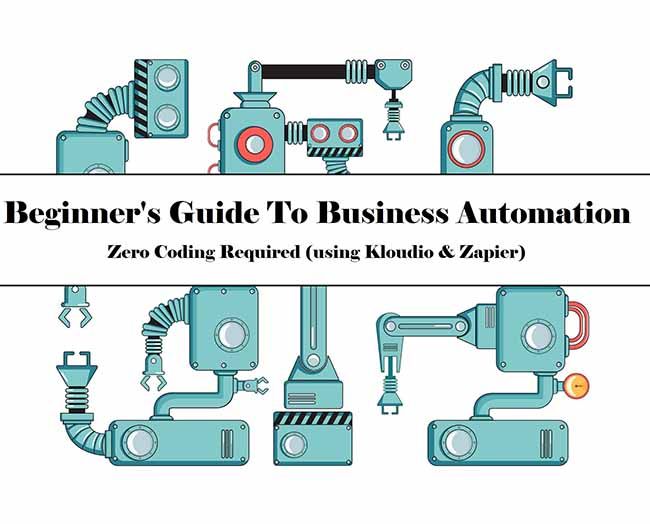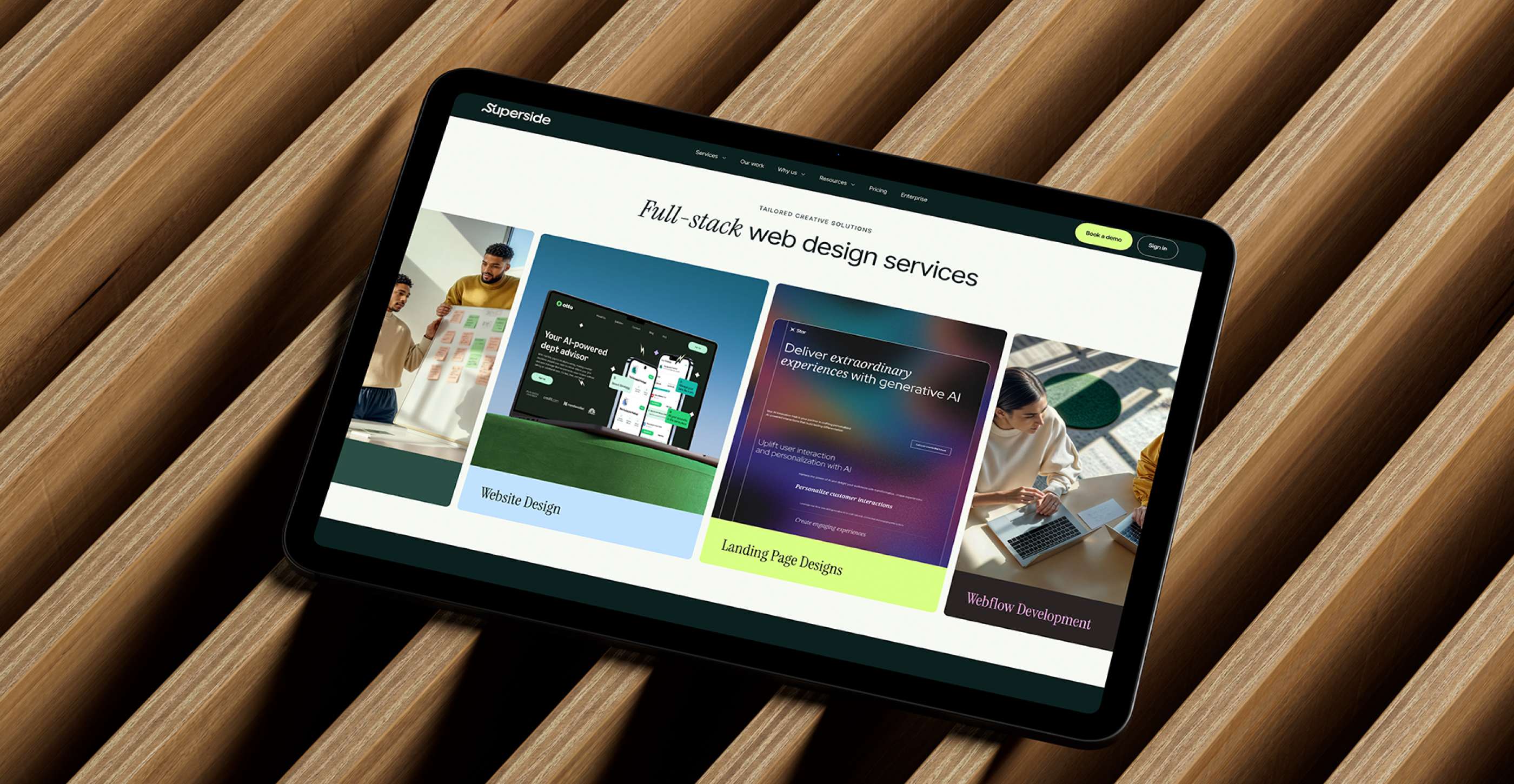Beginner’s Guide to Business Automation (Zapier & Kloudio)


*Free one-month Kloudio coupon at the end of this post. Combining LEAN Startup with Automation
Being a young start-up in a competitive industry, and having to compete with the giant freelance platforms, we quickly realized that we needed to get creative. We had limited engineering resources and an increasing pressure to not just compete but to come through on our promises of "We Start in 30 Minutes." Fortunately, we found the silver bullet that saved the day for us – automation.
Now, we know exactly what comes to mind when you're thinking automation:
- I don’t have enough development resources to automate!
Or,
- I don’t know if I want to invest in something that I might not need in the long term!
We’ve been in your shoes and we completely get it.
That is why we want to share this great hack with you that we’ve found to stay extremely lean and efficient.
We use this process to quickly automate prototypes so we have a quick fix now, and when we start developing our own full-fledged systems we know exactly what we need.
5-Minute Guide to Automation with Kloudio and Zapier
Our recommended approach focuses on Zapier and Kloudio, two automation apps that we have found to be flexible and powerful enough for our needs. At Superside, we use this agile process to prototype features before implementing them in our internal app.
Some other businesses that have found success with Zapier include ThoughtBot, Medium and Buffer.
If you have never automated, you might be thinking maybe it is too hard and only a tech expert could manage something like that.
The reality is that if you have five minutes, you have way more than the time you need to set up your first automation.
In this in-depth guide, we will walk you through every step for three basic automations from everyday Superside workflows. This will help you easily customize and replicate for your own bootstrapped start-up without any engineering support.
A quick overview of the tools
Zapier is our first automation tool of choice. The app allows you to connect apps over the internet, enabling you to set up pipelines of work that will be done for you automatically based on triggers that you create. These automated work-flows are called “zaps” and can be set up very easily without any coding.
Kloudio is useful when you want to work with databases, accessing or writing data to a database. It allows you to get access to complex databases using basic SQL through Excel/Google spreadsheets. We find it really handy and it is fairly friendly with people new to the world of data.
1. Automated Dashboards
For Management (with statistics of projects, client feedback and performance)
For Staff (with statistics of activity and performance)
How we are doing it?
- Set up an account with Kloudio
- Connect it to your data sources
Kloudio works with databases such as MySQL, PostgreSQL, Oracle and SAP. It can import data into programs like Slack, Microsoft Excel spreadsheets, Google Sheets and Amazon Echo.
With a Kloudio sign-up, a helpful tutorial shows you how to connect your databases and read reports from them. The first step is creating a connection to your team’s database, for which you will need to know things like a database host, username, port number and password. The connection setup needs to occur only once, and your later interactions with the database do not require you to provide these details again.
- Create Reports
Once you have a connection, you can now create reports. In a report, you choose to show all the data in a table, or to only select certain columns, summaries and other selections of data.
You can either write basic SQL queries or just use report builder to drag and drop everything you need.
To allow Kloudio to keep your data synced with the actual database automatically, you can enable auto-refresh on your report.
- Create Dashboards in Google Sheets
Simply use the Kloudio add-on in Google Sheets to access the reports and build on top as you like.
The dashboards we built are for our staff, to display statistics of their activity and performance. These are features that we rely heavily on to help track metrics and improve our performance as a team.
Our team and management then have access to this information, at a glance, to see what they need to focus on to improve. Implementing this in our app would have taken far more time and resources.
2. Getting Slack Messages for Projects Updates
Share client feedback with team after project is completed.
Send updates when a new project starts or a project ends.
How we are doing it?
- Since we have already set up the connection between your database, Kloudio and Google Sheets, we can use the same setup to begin with. All you need is to make sure you have set Kloudio to update your Google Sheet at regular intervals. We have it set up for every hour.
- Now, you will need to sign up for a free Zapier account.
- On your Zapier dashboard click on “Make A Zap.”
- For the trigger, you will see a range of options. The one we want is “Google Sheets,” which, according to the description, triggers when a new file row is added to the bottom of the spreadsheet.
- Once you connect and authorize your Google Sheets account, you will also be asked to select the spreadsheet and the tab that will become the trigger.
Congratulations – you’ve now become a data engineer without doing any actual coding!
- Zapier then presents you a testing step to ensure everything is set up correctly. When you run the test, you receive a message indicating whether the Zap was successfully tested.
- For our example Zap, we now want to alert a Slack channel that a new project just got created or a row just got added to the spreadsheet.
So, we’ll go ahead and add an action. Select Slack as the action app and “Send Channel Message” as the action.
- In the next step, Zapier requests access to your Slack account. Once you grant it, you receive a prompt to select the channel to which a new message will be posted, as well as message options.
- Once again, Zapier then presents you a testing step for the Zap. If successful, you can now click “Finish” to save the Zap.
- With your Zap set up successfully, now you want to activate the Zap so that it starts operating.
3. Automating Follow-Up Emails to Clients
For Feedback
For Status Updates
How we are doing it?
One reason we enjoy working with Kloudio so much is how easier it has made our lives. The best thing about it is once you have it set up, you can combine with Zapier to get hundreds of use cases.
The first part of the setup is exactly the same as before, so without going into details about that, we will start editing the email Zap within Zapier.
- Select Gmail as the action app after you have chosen Google Sheets as the trigger app, exactly like you did before. Make sure to select the relevant spreadsheet, off of which you will trigger the emails.
- After you have connected and authorized your Gmail account, it will prompt you to create the email. Now, assuming that you are connecting with a spreadsheet that has a column for email, you can just select the column and it will dynamically be placed as the recipient.
- Just test the Zap and activate it. And you are done!
You now have a completely automated process from start to finish, within just a few minutes.

Startups Using Automation for Lean Workflows
You can select from hundreds of apps and potential workflows. In addition, setting these up is surprisingly fast!
Superside also has a mix of Kloudio and Zapier doing other things, such as sending out emails for updates to staff and showing client feedback for our projects in Slack.
Plenty of other businesses have found similar success with these tools. For example, Mention, the brand monitoring startup, uses Zapier to automate lead qualification for their plan upgrades. When a Mention user hits their plan limit, the team’s Zapier webhooks find the customer’s contact details and then create a task assigned to their sales team to follow up. Zapier has access to data about the prospect’s time zone, allowing the team to pick the perfect time for a sales call.
Another startup, Swiftype, offering enterprise search software, has used Zapier to automate its workflows. An executive at the company, Ben Lake, wanted to create a complete profile of a customer to better tailor services. The team was using HelpScout for support tickets, and Salesforce to work with new leads. Using Zapier, Lake created an automatic work-flow that takes a conversation from HelpScout and attaches it to the relevant new lead in Salesforce. This way, the team always has access to a prospect’s concerns and needs. The entire process is fast and automatic.
Your Most Important Automation
Knowing your business as well as you do, you are the best person to select where you use automation and where it will provide the greatest benefit.
When you look at your business, you might come up with activities like feedback collection, social media work, metrics tracking and others as potential targets for automation.
Now, you estimate the monetary or time value of automation. You might find that maybe just one or two of the potential automation targets offer the biggest business payoff. For instance, an automation that allows your sales team to reconnect with lapsed client accounts could end up bringing in thousands or millions of dollars in future sales. That would be an area where automation brings in maximum value and should, therefore, take priority over automations where the impact, while positive, would not be as critical. To stay on track, an analytical approach adhering strongly to metrics can be invaluable.
Your Turn: Do More with Zapier and Kloudio
Automation gives you workable prototypes for a fraction of the time and money investment that developing requires. today. With Zapier and Kloudio, we are implementing things faster and becoming a truly agile startup.
As we saw, getting past the initial learning curve is much simpler than is commonly thought. To really get the most of these tools, you will want to survey your workflows and determine the approximate impact of different automation targets. Once you have automation in place, maintenance takes almost no effort.
Many businesses like Spotify and BuzzFeed are automating workflows as diverse as marketing, sales and recruiting. The availability of easy-to-use tools means that you, too, can use automation to your advantage.
Want to start automating your own workflows? Use link below to get one month of premium Kloudio subscription for free. https://app.kloud.io/#/user/signup?referrer=YCPROMO
Built to be an extension of in-house teams, we deliver fast, scalable, world-class design and creative solutions to over 450 globally renowned companies such as Amazon, Meta, Salesforce and Google. Connect with us on LinkedIn.
You may also like these

The creative power of data: How to go beyond numbers
Over the last ten years, access to marketing data has gone from a slow drip to a virtual tsunami of performance data, social media metrics and marketing analytics. Creative teams are swimming in data—unfortunately, without lifeguards.We've talked to over 200 creative leaders who, like you, wish data came with a mute button. In our Overcommitted Report, 76% of leaders said they feel burned out, and 78% say the demands on their teams are exceeding their capacity.The solution? Using data to improve workflows and inspire your team.The problem? Knowing how to cut through the noise (and the data points) to focus on what matters.Simply put, it's not how much data you have but what you do with it. We were lucky to have two creative leaders, Malik Sulieman, Creative Director at Cash App, and Ryan Hammill, Creative Director at ServiceNow, join us on our Overcommitted Virtual Summit to share how they pair data and creative insights to reduce burnout and help their teams create fantastic work.
Enterprise Graphic Design RFP Best Practices (Checklist Included)
For enterprise and mid-market businesses looking to enhance their creative capabilities and scale overall capacity, issuing graphic design RFPs are an essential part of the formalized procurement process for agencies, contractors and other external partners.RFPs create a structured, transparent framework for assessing and comparing service proposals from different outsourced creative partners.As an internal stakeholder, your opening role is to lay out your creative needs and timelines, communicating efficiently to prospective partners exactly what you’re looking for in a business relationship.In turn, these prospective creative service partners are asked to put their best feet forward demonstrating why their capabilities, capacity, skills, tools and scale are the best fit.On average, respondents spend around 30 hours of writing time developing their proposals. While it varies, you can expect to put just as much time into writing your RFP, evaluating the responses, communicating with procurement and selecting the winner of your work and budget.
13 best marketing design services for enterprises in 2025
Marketing at the enterprise level isn’t simple—especially when brand consistency and global reach are at stake. Large-scale enterprises must be able to tap into streamlined marketing design services to ensure consistent brand messaging across all platforms.Fast-growing brands also need to deliver digital marketing campaigns that work globally and feel relevant locally. This level of adaptability demands a nuanced understanding of cultural differences and consumer behavior, which many traditional agencies struggle to deliver today.Partnering with a team of the world’s creative leaders undoubtedly guarantees the best results. This article shows you key considerations for selecting a first-rate marketing design partner and lists the world’s top marketing design services companies to help you find the best fit. Let's go!Key considerations for selecting a marketing design partnerChoosing a design partner is a big decision that will have lasting impact on your marketing success. Use this checklist to help you evaluate potential partners:






